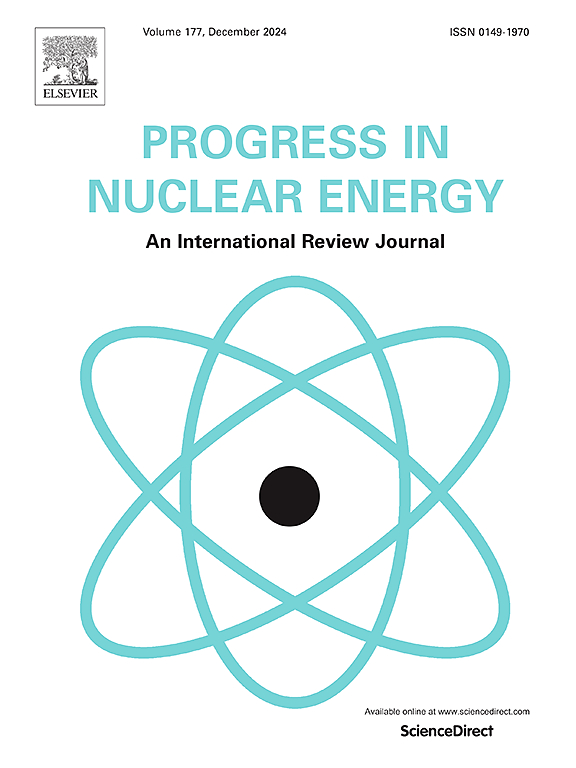Numerical research on the thermal-hydraulic characteristics of the large sodium-cooled fast reactor roof slab
IF 3.3
3区 工程技术
Q1 NUCLEAR SCIENCE & TECHNOLOGY
引用次数: 0
Abstract
The roof slab of a large sodium-cooled fast reactor is a structure subjected to bottom heating and external cooling. Preserving the roof slab's integrity is paramount for ensuring the safety of the fast reactor, which is profoundly influenced by the temperature distribution. However, owing to its intricate internal configuration, obtaining a detailed and comprehensive temperature distribution of the roof slab is challenging. To address this, a refined and comprehensive 1:1 prototypical model of the fast reactor roof slab was established and subjected to numerical calculations. These calculations determined the thermal-hydraulic characteristics of the roof slab during operating conditions, as well as the natural circulation characteristics within the annular gaps. In order to assess the reliability of the calculation methods utilized for evaluating the thermal-hydraulic properties of the fast reactor roof slab, this study developed a scaled-down model based on the scaled-down Heat-transfer Experimental Facility for Argon space at the top of the main vessel (HEFA). A comprehensive comparison was conducted between the calculated results and the corresponding experimental data. The resulting discrepancy was found to be less than 3%, indicating the effectiveness of the employed calculation methods and the credibility of the obtained results. Finally, an empirical temperature-Ra equation for the fast reactor roof slab under operating conditions was obtained by fitting the calculation results. This research provides a valuable reference for the design of the fast reactor roof slab and its associated penetration.
求助全文
约1分钟内获得全文
求助全文
来源期刊

Progress in Nuclear Energy
工程技术-核科学技术
CiteScore
5.30
自引率
14.80%
发文量
331
审稿时长
3.5 months
期刊介绍:
Progress in Nuclear Energy is an international review journal covering all aspects of nuclear science and engineering. In keeping with the maturity of nuclear power, articles on safety, siting and environmental problems are encouraged, as are those associated with economics and fuel management. However, basic physics and engineering will remain an important aspect of the editorial policy. Articles published are either of a review nature or present new material in more depth. They are aimed at researchers and technically-oriented managers working in the nuclear energy field.
Please note the following:
1) PNE seeks high quality research papers which are medium to long in length. Short research papers should be submitted to the journal Annals in Nuclear Energy.
2) PNE reserves the right to reject papers which are based solely on routine application of computer codes used to produce reactor designs or explain existing reactor phenomena. Such papers, although worthy, are best left as laboratory reports whereas Progress in Nuclear Energy seeks papers of originality, which are archival in nature, in the fields of mathematical and experimental nuclear technology, including fission, fusion (blanket physics, radiation damage), safety, materials aspects, economics, etc.
3) Review papers, which may occasionally be invited, are particularly sought by the journal in these fields.
 求助内容:
求助内容: 应助结果提醒方式:
应助结果提醒方式:


